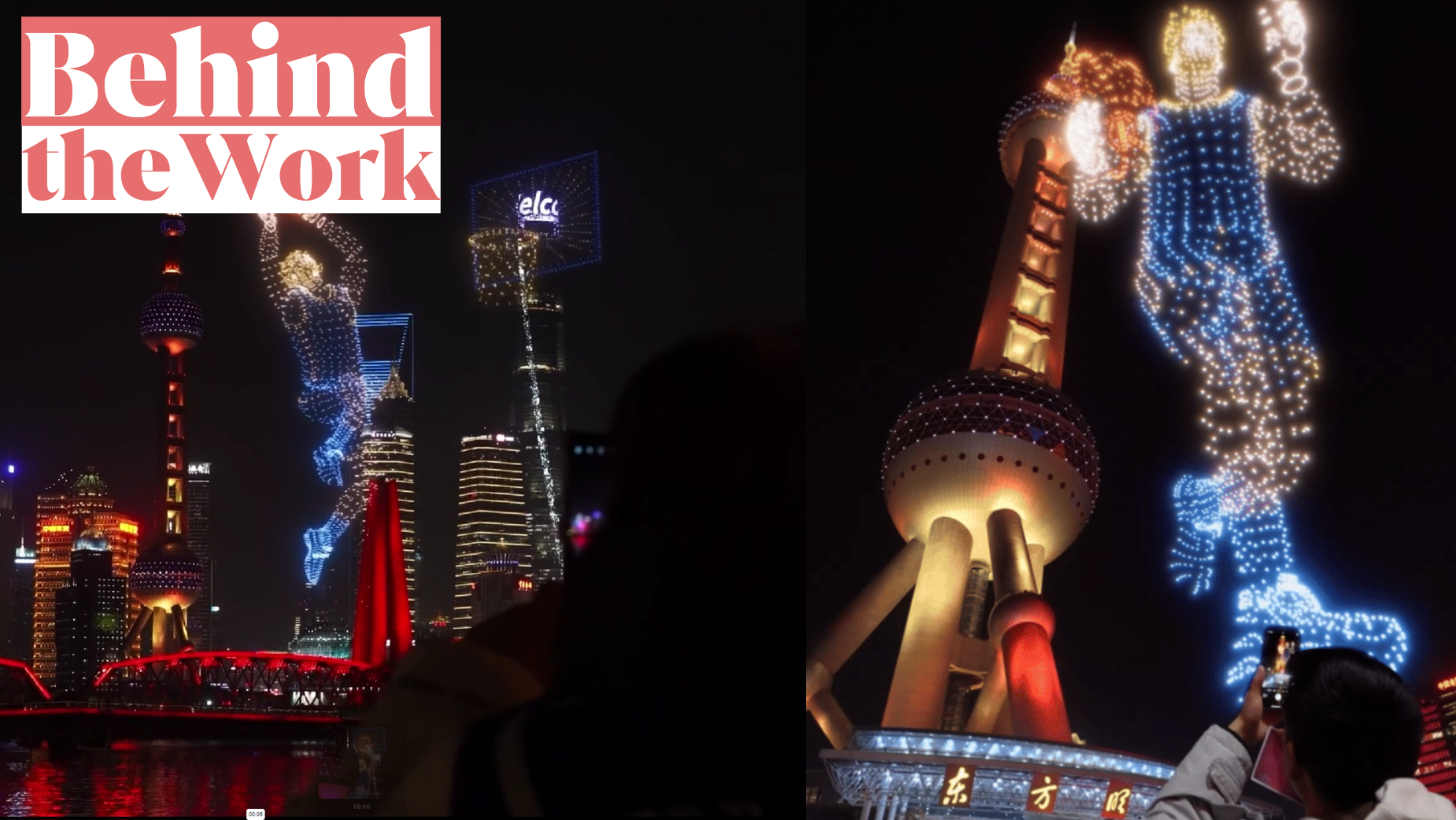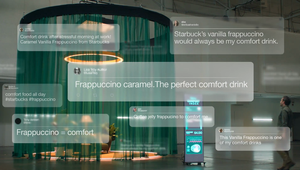
FOOH Brings Impossible Slam Dunk to Life for Harbin Beer’s NBA Partnership

To launch Harbin Beer as an official NBA partner, the Chinese lager brand partnered with innovative production studio UNIT9 to create the biggest slam dunk in history - using faux-out-of-home (FOOH) techniques to set a spectacular drone show against Shanghai’s iconic skyline.
Designed and animated with 3D CGI, the ‘drones’ were then composited into real footage of Shanghai’s night sky, making it appear like a basketball player made of drones was dunking next to landmarks like The Shanghai Pearl and Shanghai World Financial Centre.
Speaking to LBB’s Ben Conway, UNIT9's executive creative director, Mark Vatsel, and creative director, Alexander Brown, explain how the piece was put together in this “uniquely playful medium”, balancing the ambitious idea with believable visuals to ensure the FOOH succeeds, ‘without becoming F-TVC’.
LBB> Where did the creative idea come from? Did you work with an agency or direct-to-brand?
Mark> We had the very exciting brief of elevating the partnership between the NBA and Harbin Beer across a city skyline in the biggest way ever - so we dreamt up an off-the-scale faux-out-of-home (FOOH) drone show that would take over the Shanghai sky without physical limitation. We worked directly with the brand on this one.
LBB> Why did you choose FOOH for this project?
Mark> FOOH was the most effective way to communicate the brand's ambition across the Shanghai skyline. The final execution, a guerilla-style video primed for social sharing, is a great way to reach a huge audience authentically.
Alexander> FOOH is a uniquely playful medium because the execution must always exist on the cusp of what is physically achievable and logistically improbable. We get to dream up what could be achieved without boundaries or restrictions. Of course, it’s a fine line to walk because if the end result is too fantastical, people won’t believe it, but if it’s not fun enough, they won’t pay any attention. If someone leaves scratching their head, wondering whether or not it’s real, it means they are engaged - but while it might fool some, our aim isn't necessarily to trick anyone. Like traditional OOH, we want to create an eye-catching execution that grabs attention, but with FOOH, we push it further into playful whimsy.

LBB> What are the key ways to develop FOOH that is believable?
Alexander> Striking the right level of believability often comes down to limiting the execution - making it more grounded. For this NBA project with Harbin Beer, we needed to find a way of simulating a spectacular drone show while being mindful of not using too many ‘drones’ and also keeping the speed realistic. We definitely pushed it, but it's about finding that balance. A drone expert would immediately see that it’s fake, but it worked incredibly well in driving engagement for most people. Ultimately, it’s just about impressing people. It would have been wonderful to be able to do it for real, but it simply wouldn’t have been possible to create a real drone show on that scale.
LBB> Did you have to shoot the Shanghai skyline yourselves? How did you choose where to 'set' this drone show?
Alexander> We had a local team on the ground in Shanghai that captured the shots we needed to tell the story. Right from the start, Harbin Beer wanted to include iconic landmarks, beer and basketball. Shanghai became our hero location in part because of its world-famous skyline. The Shanghai Pearl and the Shanghai World Financial Centre (which we reimagined as the bottle opener) were two landmarks we felt could be playfully subverted.
LBB> Take us through the VFX pipeline that brought these visuals to life!
Alexander> We designed the basketball player in 3D as a cloud of drones, which we could then animate to create a spectacular dunk. Then the footage was tracked, and the tracked camera was used to render out the animation.

LBB> Was the basketball player modelled on anyone? How did you recreate the movement of a basketball player dunking but with authentic drone movement?
Alexander> The resolution of any drone show character is always going to be low, and the fidelity we can express with a couple hundred drones is limited to large defining features only. We decided to have a dunk because it’s the most visually defined and dramatic basketball move. The run and dunk were based on several references, but we didn't opt for motion control simply because, again, a real drone show would not be able to express that level of fidelity. Choosing to animate the dunk and opting for a low-fi character were both creative decisions to give the execution a sense of realism. As the director, a lot of my job was removing and simplifying. The drone count is still bonkers, but you have to make it special.
LBB> What was the hardest challenge you faced on this project? How did you overcome it?
Alexander> I think the most challenging aspect of this project was juggling client expectations with feasibility. Working directly with the client is always slightly more fluid - the idea can evolve, the execution might change, the campaign may shift - and balancing that with gathering permissions from landmarks and dealing with practical and creative roadblocks meant we needed to stay on our toes.
The real challenge with FOOH is that, as a medium, it doesn’t have clearly defined outcomes or rules. It reminds me of when everyone was making ‘viral videos’ - it’s a mercurial term that’s open to interpretation. It can quickly descend into something a bit naff, so there are a lot of creative discussions to ensure it succeeds and serves a purpose as FOOH and doesn't just become an F-TVC.















